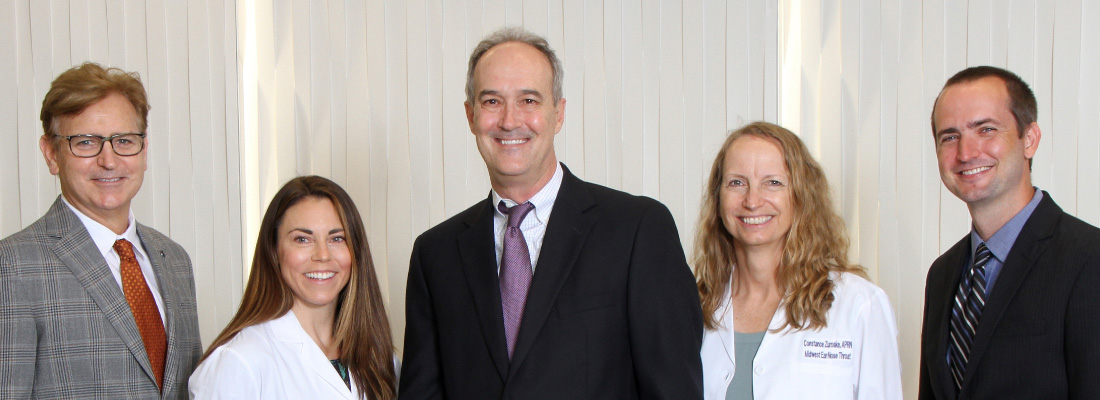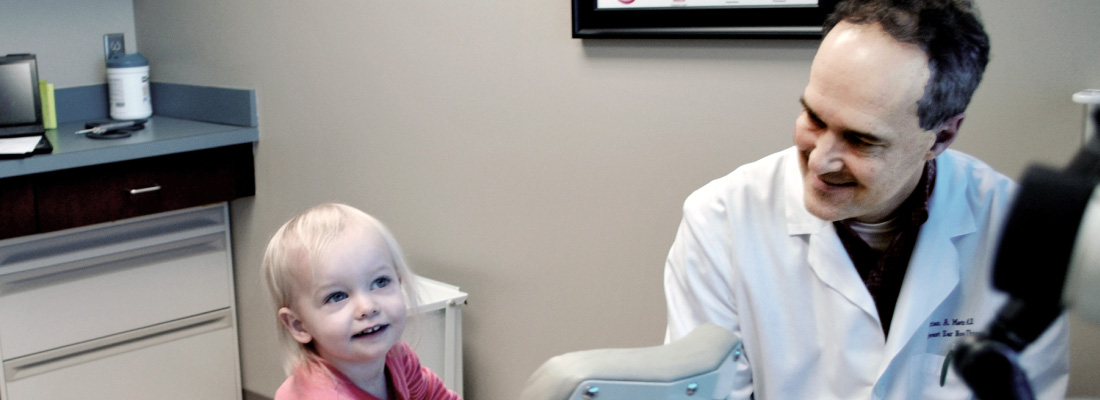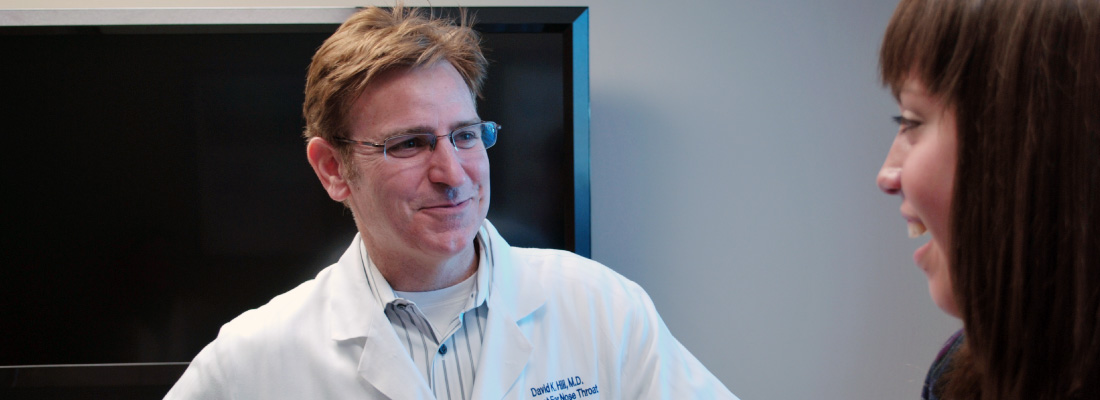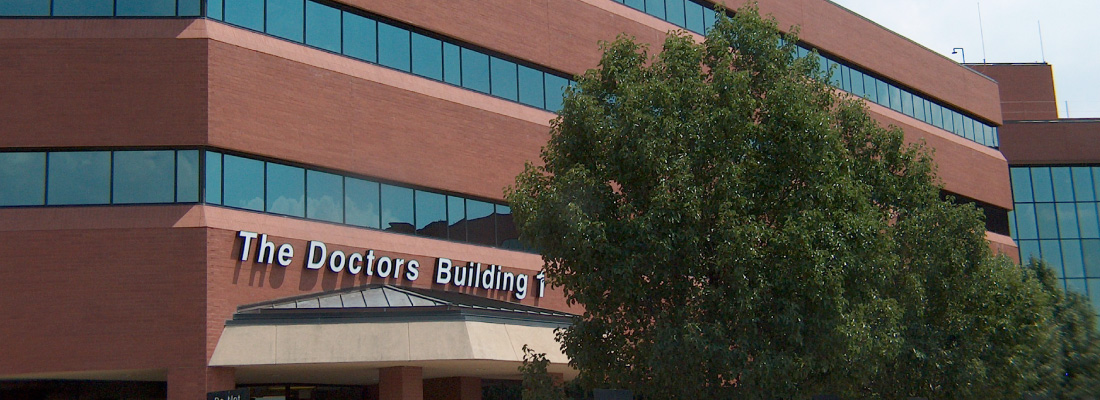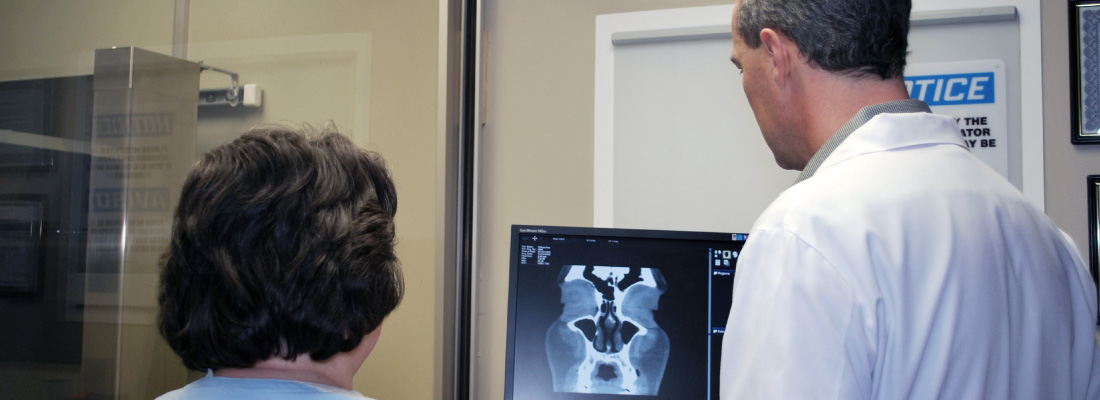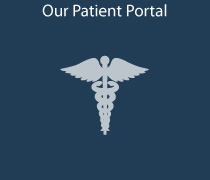Graves’ Disease
The thyroid is a butterfly-shaped gland located at the base of the front of the neck. It produces thyroid hormone, which controls your metabolism, temperature regulation, and keeps your muscles and organs working properly. Graves’ disease causes the thyroid gland to become overactive. It is an autoimmune disease in which the body fights against itself and causes the thyroid gland to become overactive. It is more common in women, but can also can occur in men.
What Are the Symptoms of Graves’ Disease?
The symptoms of Graves’ disease include:
- Racing heartbeat
- Anxiety
- Weight loss
- Tremors
- Feeling warm
- Difficulty sleeping
- Bulging eyes
- Eye redness
- Double vision, or decreased vision
- Thickening of the skin in front of the shins
A blood test is used to diagnose Graves’ disease. A measurement of the thyroid stimulating hormone (TSH) is low in Graves’ disease. The levels of thyroid hormone, such as T3 and T4, are high in Graves’ disease. Measuring antibodies called TSI or TRAb also help confirm the diagnosis. Sometimes, a “radioactive iodine uptake study” is used to confirm the diagnosis of Graves’ disease.
What Causes Graves’ Disease?
Graves’ disease is an autoimmune disorder in which the body produces inflammation of the thyroid gland causing it to be overactive. The specific cause is unknown but may occur at higher rates in certain families.
What Are the Treatment Options?
Treatment for Graves’ disease includes daily medications, radioactive iodine, or thyroid surgery. Medications can be used for several months to try and control (but not cure) the hyperthyroidism. If the medications do not control the disease, surgery or radioactive iodine may be necessary. Radioactive iodine and surgery are used to manage the disease, but can cause the thyroid to be underactive and you must then take medication to replace the thyroid hormone.
Therapy depends on the presence of eye symptoms, the presence and size of thyroid nodules, and your preferences. Surgery is generally considered if the thyroid also has nodules, the gland is very large, the patient has eye disease (which may worsen if radioactive iodine is given), or if the patient wants to avoid radioactive iodine.
What Questions Should I Ask My Doctor?
- Do I have thyroid nodules or a goiter? What’s the difference, and how does that affect treatment?
- Do you have expertise in thyroid surgery? Can you tell me about your training?
- How effective are medications and what are the risks?
Goiter
The thyroid is a butterfly-shaped gland located at the base of the front of the neck. It produces thyroid hormone, which controls your metabolism, temperature regulation, and keeps your muscles and organs working properly.
Goiter refers to an enlarged thyroid gland. A single or multiple nodules, Graves’ disease, and hyperthyroidism can all lead to the development of a goiter. A goiter can develop in one or both sides of the thyroid gland. In some people, the goiter will start to grow down into the chest. This is referred to as a substernal goiter.
What Are the Symptoms of Goiter?
Goiters can often be seen or felt as a lump or mass in the neck. As goiters become bigger they can put pressure on your windpipe (trachea) or food pipe (esophagus), causing symptoms such as:
- Difficulty swallowing
- Difficulty breathing (particularly when lying down)
- Choking sensation
- Pressure in the neck
What Causes Goiter?
In some parts of the world, goiters develop because of a lack of iodine in peoples’ diets. However, in the United States where iodine is added to salt, goiters are most often caused by other problems. A family history of goiter increases the risk of developing goiter.
What Are the Treatment Options?
When a patient starts to experience symptoms, treatment is often offered. The exact type of treatment is based on the cause of the goiter and the patient’s preferences. In some cases, thyroid surgery is the best treatment option. Discuss any possible symptoms or concerns you may have with your primary care provider, an endocrinologist, or an ENT (ear, nose, and throat) specialist, or otolaryngologist.
What Questions Should I Ask My Doctor?
- I have difficulty breathing or swallowing. Could this be related to a goiter?
- How big is my goiter?
- Do I need to treat it, or can I just watch it?
GERD and LPR
Acid reflux occurs when acidic stomach contents flow back into the esophagus, the swallowing tube that leads from the back of the throat to the stomach. When acid repeatedly “refluxes” from the stomach into the esophagus alone, it is known as gastroesophageal reflux disease (GERD). However, if the stomach acid travels up the esophagus and spills into the throat or voice box (called the pharynx/larynx), it is known as laryngopharyngeal reflux (LPR).
While GERD and LPR can occur together, people sometimes have symptoms from GERD or LPR alone. Having symptoms twice a week or more means that GERD or LPR may be a problem that could be helped by seeing a doctor.
What Are the Symptoms of GERD and LPR?
Many patients with LPR do not experience classic symptoms of heartburn related to GERD. And sometimes, adult patients may experience symptoms related to either GERD or LPR like:
- Heartburn
- Belching
- Regurgitation (a surge or rush back) of stomach contents
- Frequent throat clearing or coughing
- Excess mucus
- A bitter taste
- A sensation of burning or throat soreness
- Something “stuck” or a “lump” in the back of the throat
- Hoarseness or change in voice
- Difficulty swallowing
- Drainage down the back of the nose (post-nasal drip)
- Choking episodes (can sometimes awaken from sleep)
- Difficulty breathing, if the voice box is affected
Signs in infants and children are different from adults and may include:
- Breathing problems such as a cough, hoarseness, noisy breathing, or asthma
- Pauses in breathing (apnea) or snoring when sleeping
- Feeding difficulty (spitting up)
- Turning blue (cyanosis)
- Choking
- Apparent life-threatening event where there is arching of the back while in distress
- Trouble gaining weight or growing
What Causes GERD and LPR?
GERD and LPR can result from physical causes and/or lifestyle factors. Physical causes can include weak or abnormal muscles at the lower end of the esophagus where it meets the stomach, normally acting as a barrier for stomach contents re-entering the esophagus. Other physical causes include hiatal hernia, abnormal esophageal spasms, and slow stomach emptying. Changes like pregnancy and choices we all make daily can cause reflux as well. These choices include eating foods like chocolate, citrus, fatty foods, spicy foods or habits like overeating, eating late, lying down right after eating, and alcohol/tobacco use (see below).
GERD and LPR in infants and children may be related to causes mentioned above, or to growth and development issues.
What Are the Treatment Options?
Your primary care provider or pediatrician will often refer you to an ENT (ear, nose, and throat) specialist, or otolaryngologist, for evaluation, diagnosis, and treatment if you are having related symptoms.
GERD and LPR are usually suspected based on symptoms, and can be further evaluated with tests such as an endoscopic examination (a tube with a camera inserted through the nose), biopsy, special X-ray exams, a 24-hour test that checks the flow and acidity of liquid from your stomach into your esophagus, esophageal motility testing (manometry) that measures muscle contractions in your esophagus when you swallow, and emptying of the stomach studies. Some of these tests can be performed in an office.
Options for treatment include lifestyle and dietary modifications (see below), medications, and rarely surgery. Medications that can be prescribed include antacids, ulcer medications, proton pump inhibitors, and foam barrier medications. To be effective, these medications are usually prescribed for at least one month, and may be tapered off later after symptoms are controlled. For some patients, it can take two to three months of taking medication(s) to see effects.
Children and adults who do not improve with medical treatment may require surgical intervention. Surgical treatment includes “fundoplication,” a procedure that tightens the lower esophageal muscle gateway (lower esophageal sphincter, or LES). Newer techniques allow this to be done in an endoscopic or minimally invasive manner. Another surgical option uses magnetic beads to tighten the LES.
What Changes Can I Make to Prevent GERD and LPR?
For adults, you can take certain steps to reduce or prevent occurrences of GERD and LPR, including:
- Lose weight.
- Cut down or stop smoking tobacco products.
- Limit or avoid alcohol.
- Wear clothing that is looser around the waist.
- Eat three to four small meals a day, instead of two to three large ones, and eat slowly.
- Avoid eating and drinking within two to three hours of bedtime.
- Limit problem foods, such as caffeine, carbonated drinks, chocolate, peppermint, tomatoes, citrus fruits, fatty and fried foods, and/or spicy foods.
What Questions Should I Ask My Doctor?
- Can I take over-the-counter medications to help control my acid reflux?
- What other steps can you recommend that I take to reduce or limit acid reflux?
- Is acid reflux an indication of a larger problem?
Fungal Sinusitis
Fungal sinusitis is a broad term used to describe various situations when fungus might be involved in the cause or symptoms of nasal and sinus inflammation. Fungus is an entirely separate “kingdom” from plants and animals; they are plant-like but cannot create their own food like plants do. Because they do not contain some of the proteins that plants use to harness the energy of the sun, fungi (plural) must absorb their nutrients from other organisms. Usually, fungi get their nutrients from dead or dying organisms, but can infect human beings as well (like infections of the skin or toenails).
The number of fungal infections has increased over the past few decades. Part of this may only be related to an increased awareness of fungal involvement in our environment, but may also be due to other things. While the body is usually able to fight off fungal infections easily, other conditions that compromise the immune system can encourage fungi to thrive. This includes conditions such as diabetes, leukemia or lymphoma, congenital immunodeficiencies (when the immune system does not work because of genetic problems), overuse of antibiotics, receiving medications to prevent organ transplant rejection, and other situations.
What Are the Symptoms of Fungal Sinusitis?
Symptoms of fungal sinusitis are similar to other forms of sinusitis, including:
- Nasal congestion
- Facial pain/pressure
- Loss of smell or foul odor in the nose
- Nasal drainage
Fungal sinusitis can be quite severe in anyone with a compromised immune system, and can cause:
- Changes of the skin (pale or black)
- Numbness of the face
- Facial swelling of cheeks or eyelids
What Causes Fungal Sinusitis?
There are four types of fungal sinusitis:
Saprophytic Fungus—This happens when fungus or mold grows on top of mucus or mucous crusts inside the nose. In this case, the fungus is not really infecting the nasal tissue, it’s just “living” off the mucus in the nose. This may not cause any additional symptoms that were not already present, and treatment is simple removal of the crusts with nasal washes or other methods.
Fungus Ball—This is caused by fungus getting caught in one of the sinuses, forming clumps of material that often contain bacteria as well. This is most often in the maxillary, or cheek, sinus, and usually occurs in patients whose immune system is working fine. Often there are no symptoms, other than slight discomfort until the fungus ball grows large enough to block off the sinus. This form of fungal sinusitis requires simple surgery to open and wash out the sinus. Anti-fungal therapy is generally not prescribed.
Allergic Fungal Sinusitis (AFS)—This form of fungal sinusitis results from an allergic reaction to any one of several different common fungi, and usually occurs in patients whose immune system is working well. Patients may only notice allergic-like symptoms of nasal congestion, runny nose, and sneezing. As AFS gets worse, it can cause the sinuses to fill with thick mucus. Eventually, the sinuses can get bigger and start changing the appearance of the eyes and face. Surgery is required to treat this form of sinusitis, and without continued medical therapy afterwards, recurrence is common.
Invasive Fungal Sinusitis—This is a severe infection of the nasal and sinus lining that can lead to the destruction of nasal/sinus tissue. There are three different forms of invasive fungal sinusitis:
- Chronic Indolent/Granulomatous Sinusitis is a very rare disease which is usually not seen in the United States. Patients have a normally functioning immune system but for some reason the presence of the fungus results in a severe immune response that destroys the lining of the nose.
- Chronic Invasive Sinusitis is seen in patients who do not have a normally functioning immune system. Typically, this is seen in patients with diabetes. The fungus invades the tissue of the sinuses, but the disease progresses very slowly.
- Acute Fulminant Invasive Fungal Sinusitis is seen in patients who do not have a functioning immune system. Severe diabetics, transplant patients, and those with lymphoma or leukemia are at the highest risk. In this disease the fungus invades and destroys blood vessels that line the nose resulting in the death of that tissue. This is a life-threatening disease and often requires emergency surgery and anti-fungal medications.
What Are the Treatment Options?
Typical treatment options are noted in the individual causes of fungal sinusitis described above. Frequently, some sort of surgery or procedure is required to physically remove the fungus, the mucus that contains it, and sometimes the tissue that has been affected.
Antifungal medications can be used as well, but usually not without a surgery. There have been some studies that indicate that antifungal medications called “azoles,” such as itraconazole, can be useful in treating allergic fungal sinusitis. With invasive fungal sinusitis, use of antifungal medications is required.
What Questions Should I Ask My Doctor?
- How can we tell if fungus may or may not be involved in my sinusitis?
- Should we consider oral or topical antifungal treatments?
- What kind of surgery might I need?
- Will I need more than one surgery?

